A Peruvian A-Z
October 10th, 2013
Ah, Peru. How we loved you, and – just occasionally – how we loved to moan about you. Peru will stick in the memory as a real montaña rusa (rollercoaster) of a country, giving us some of our biggest highs – both literal and metaphorical – as well as some of our most grumpy lows of the trip so far.
In riding terms, it will be hard to beat this country for the sheer variety of its incredible landscapes. Peru has it all, often compressed into a single day’s ride: the lush gorges and hilltop fortresses of Chachapoyas; the arid, Star Wars-esque canyons of Cajamarca; the starkly beautiful altiplano and lakes of Junín and Titicaca; and of course the snow-capped peaks of the Cordillera Blanca. And we didn’t even scratch the surface of this enormous country – by sticking stubbornly to the central ranges of the Andes we bypassed the Peruvian Amazon, the pre-Incan ruins of the coast, and the deep canyons and high volcanoes of Arequipa. If you like to go slow like we do, then even four months on a bike in Peru will leave you feeling like you’ve missed out.
But if Peru was at the front of the queue on the day when the natural spoils of South America were awarded, then there were times when we couldn’t help thinking it was stuck at the back (or maybe just didn’t bother turning up) when the personal charm and warmth were handed out. It’s not that we didn’t meet friendly, hospitable people. As always, away from the main roads and tourist honey pots and out on the back roads of the campo, we were grateful to the many Peruvians who helped us on our way with gifts of food, drink or a spot to camp for the night.
Yet there was still something missing: that magical human element, so hard to put your finger on, but which has been at the heart of some of our best experiences of the trip so far. Call us spoilt, but in Peru we missed that irresistible Latin American lust for life that we had come to love from some of our favourite countries so far. The spontaneous roadside encounters that send you on your way with a grin on your face. The random chats with curious old men about everything from left-wing politics to this year’s potato harvest, via The Beatles and Mr Bean. That sense that however bad things get, the best way to deal with it is to laugh, joke and dance your cares away with closely-knit family and friends. We’d grown used to life in Latin America being lived in full colour, but at times in Peru it felt like someone had flicked the switch into shades of grey.
It’s always telling to hear how people describe their own countries to you. In Colombia, a country where the last 50 years of civil war have left an estimated 220,000 people dead and up to 5.5 million displaced, people still never tired of telling us how blessed they were to be living in “paradise”. In Ecuador, people proudly told us of the steps forward their country has taken in the last few years under the leadership of President Rafael Correa. And in Peru? “Watch out for the ratones“, they told us over and over again: “This country is full of thieves.”
And to be honest, you can hardly blame them. Of all the countries in Latin America, Peru’s mineral wealth has meant that it has perhaps suffered most from foreign pillaging – firstly at the brutal hands of the conquistadores, and then more recently at the more airbrushed (but ultimately no less brutal) hands of foreign mining companies. Peru is one of the world’s richest countries in terms of natural resources, but of course the average Peruvian sees none of this wealth. After centuries of exploitation, life here remains undeniably tough. It’s no surprise then that most Peruvians are ambiguous at best about the most recent influx of foreign invaders, this time clutching digital cameras and sporting matching “I’ve been to Machu Picchu” hats. Tourism might have become a mainstay of the economy, but that doesn’t mean Peruvians are about to start receiving us with hugs and kisses.
Nevertheless, our four months in Peru will undoubtedly go down as some of the most memorable of our trip. Peru made our knees go weak with its climbs, our fists clench from time to time with its very un-Latin American miserablism, and our jaws regularly hit the floor at its amazing landscapes. Summing it all up is pretty much impossible, so in the spirit of our Mexico A-Z, here are some of our most memorable Peruvian moments in (sometimes highly dubious) alphabetical order.
James
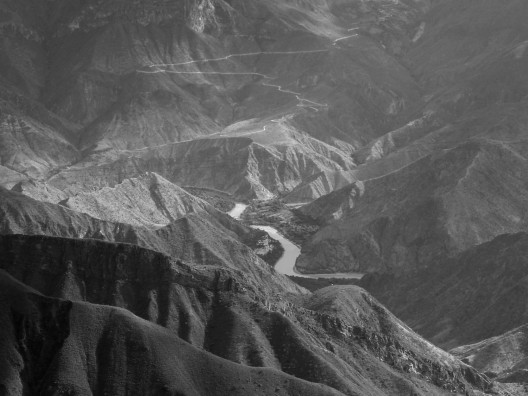
Andes. For us, Peru was all about the Andes – and this was the moment we knew that we had arrived: gazing down at our 60km, almost three vertical kilometre descent to Balsas and the next day’s 45km climb to Celendín. After a while, spending two days climbing a mountain followed by two hours freewheeling down the other side became quite normal…
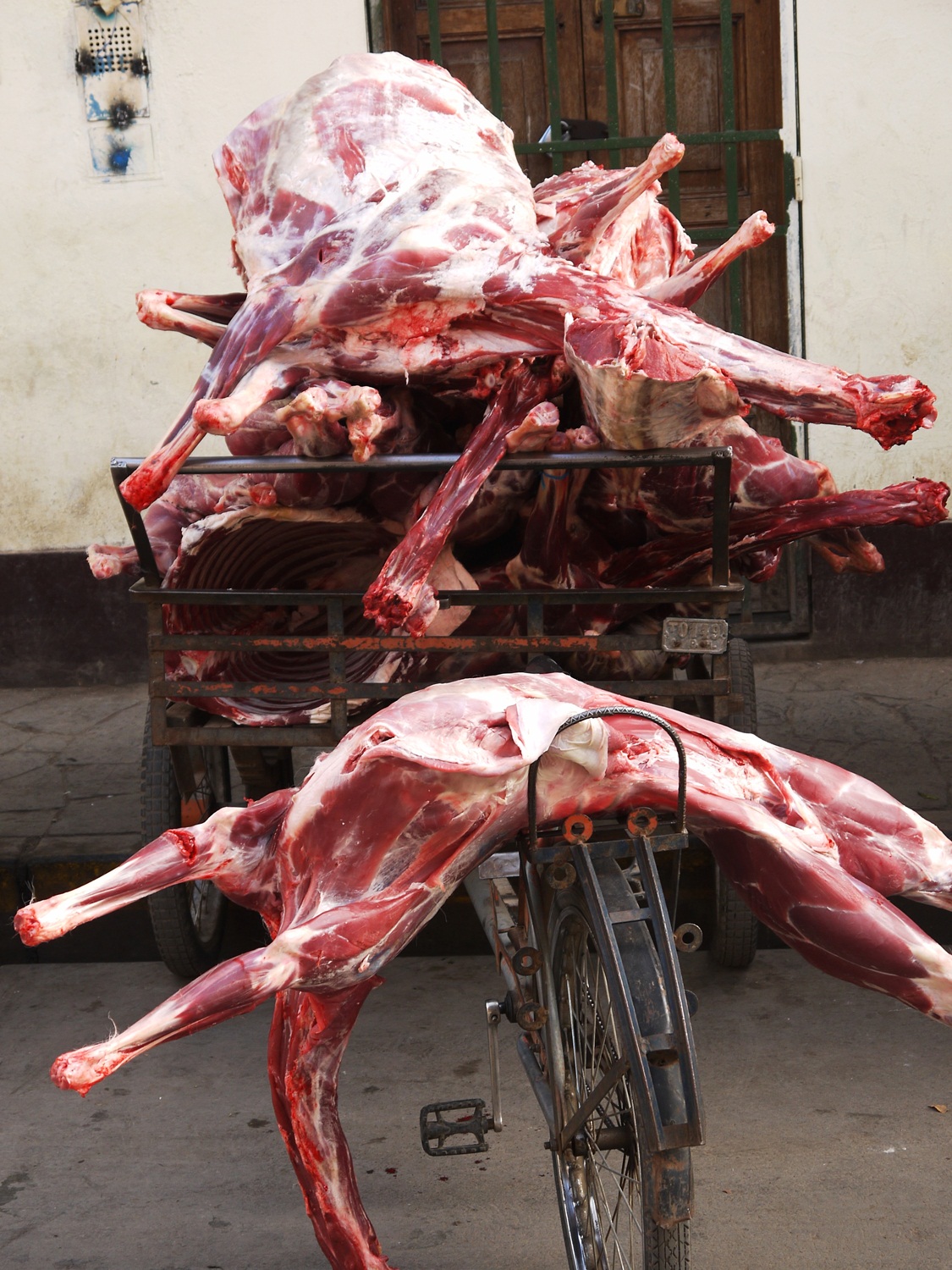
Butchers Bike. Markets are always the first place we head for in a new town, and Peru had some of the best we had seen since Mexico. Hang around the entrance and you’ll find the true bike heroes of Latin America, transporting everything from mountains of mandarins to a pile of freshly slaughtered goats by pedal power.
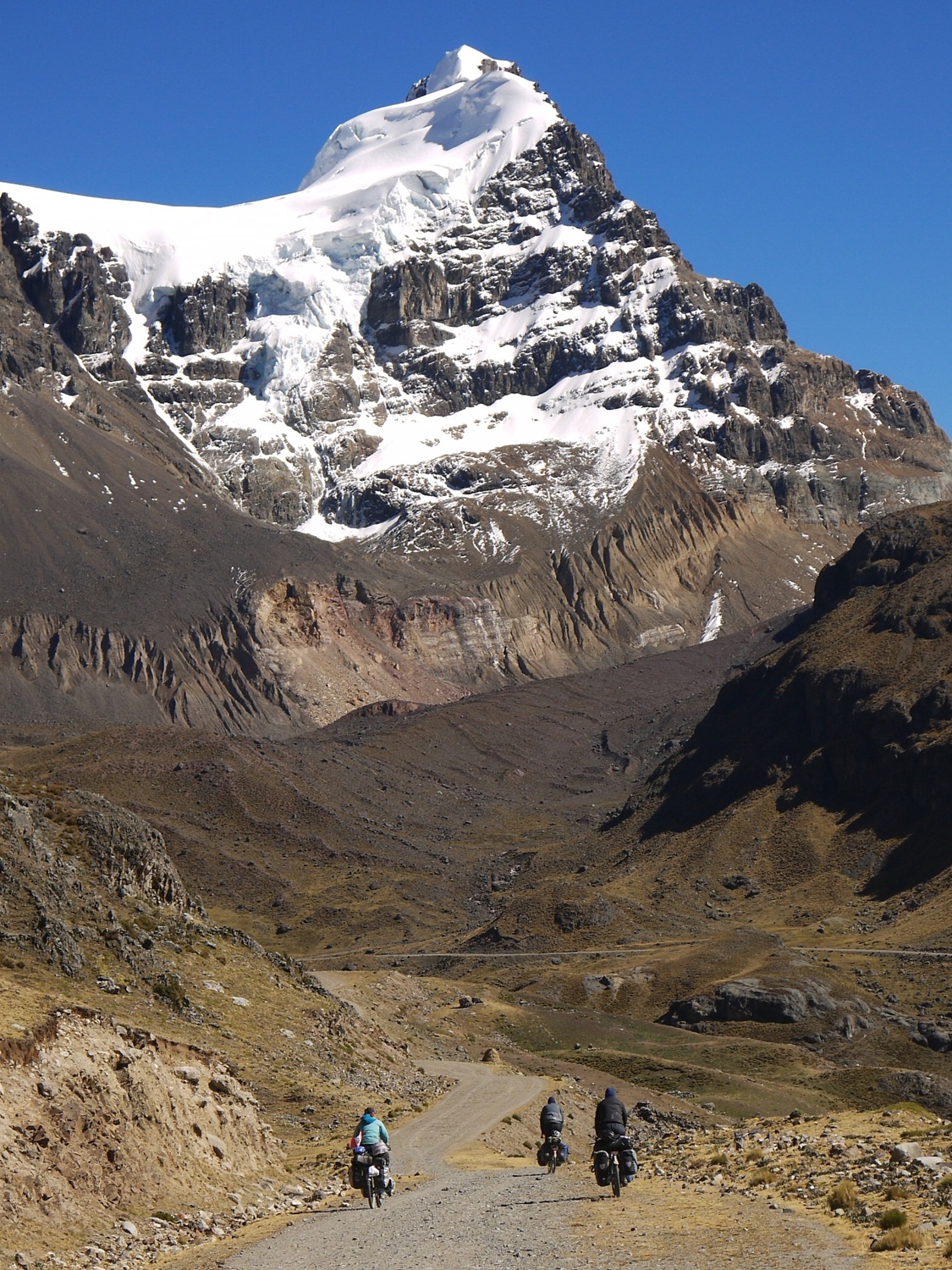
Cordillera Blanca. If we’re honest, then this was what we were really waiting for in Peru – and we weren’t disappointed. Our loop around Punta Olímpica and the Portachuelo de Llanganuco went straight into our top five rides of the trip so far and to the top of our list of places to return.
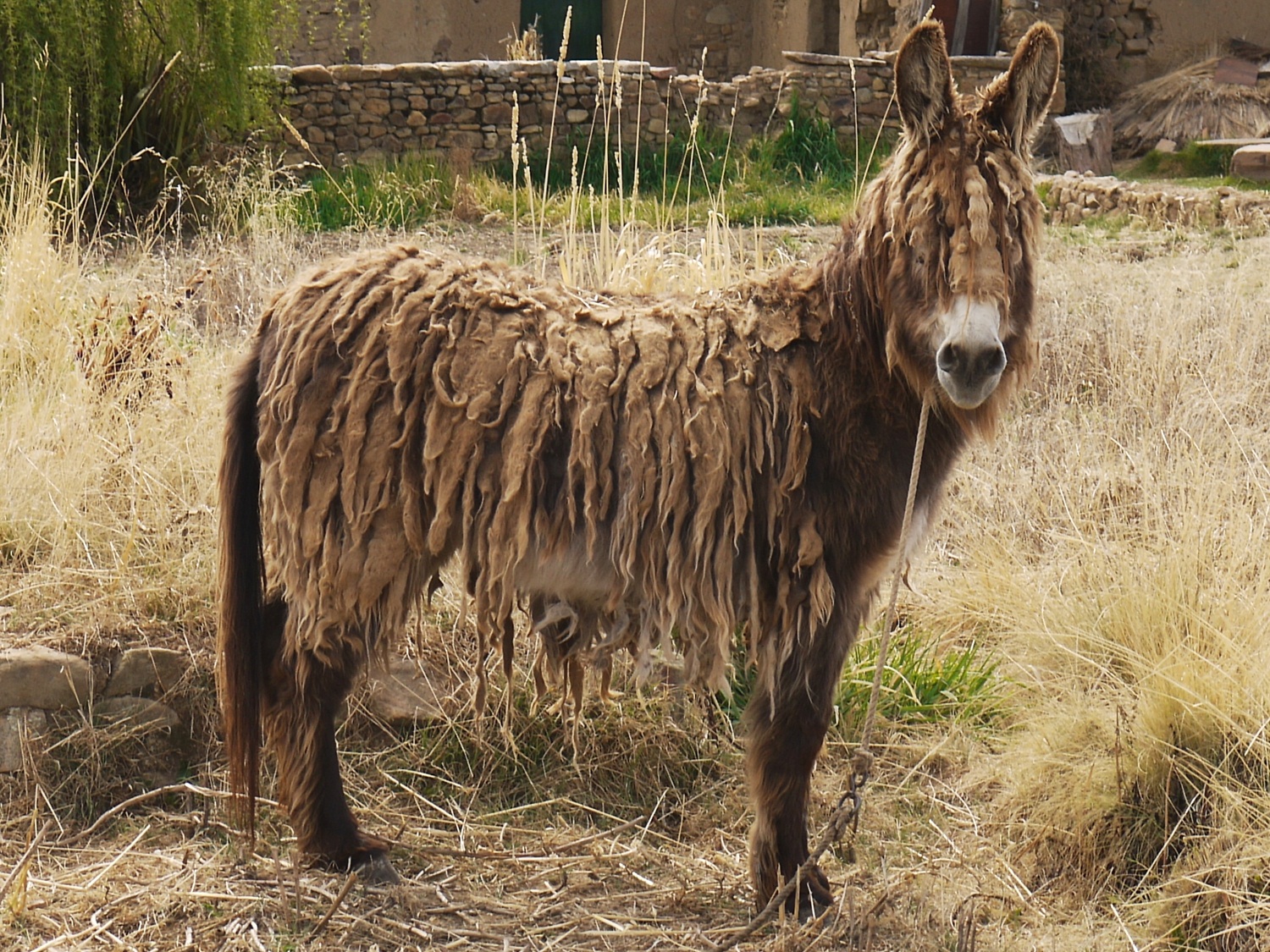
Dreadlocked. We might have been far from the Caribbean, but dreds are all the rage amongst the farm animals of rural Peru. Most were dogs, but this donkey was a show-stopper.
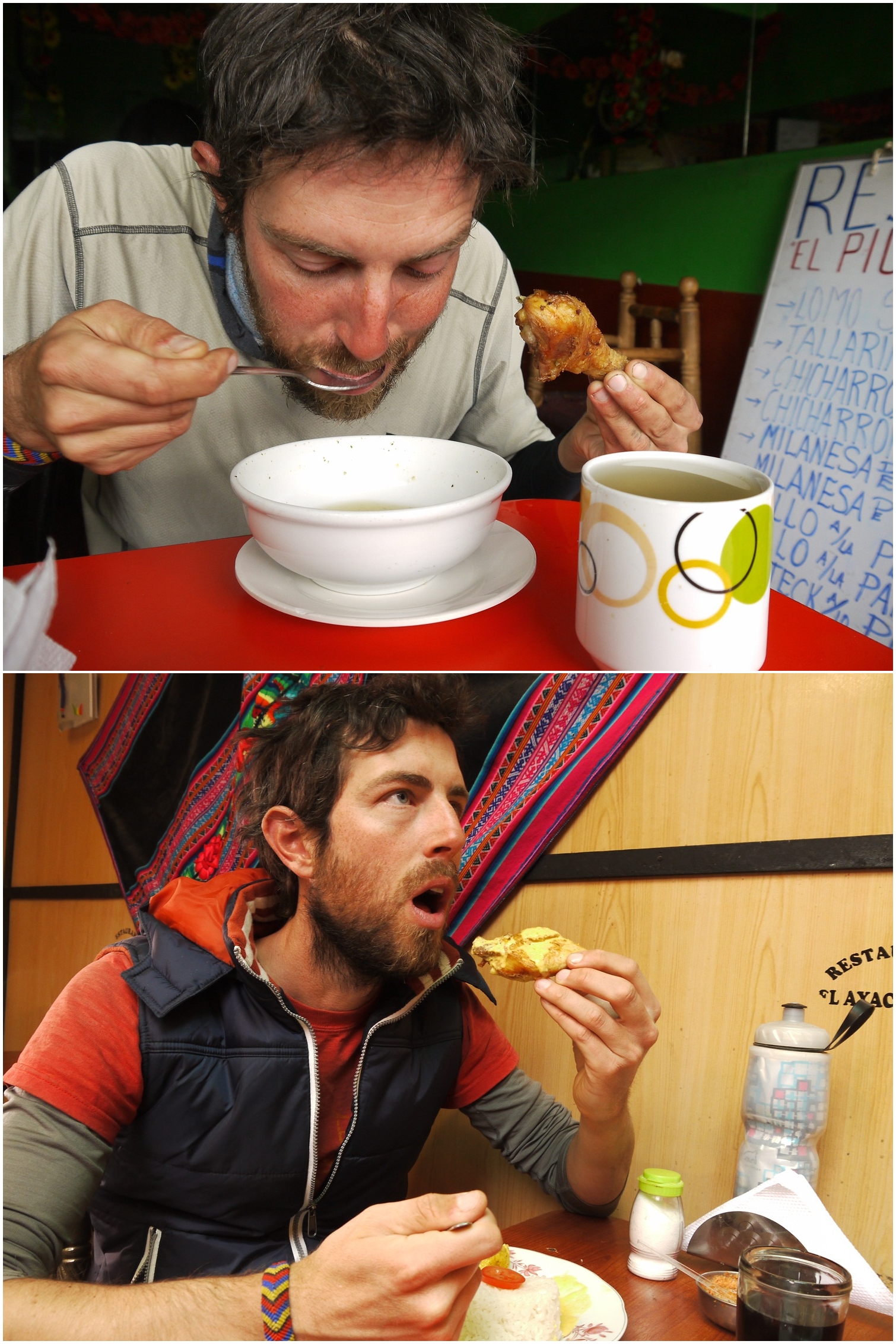
Eating etiquette. We quickly learnt that mealtimes in Peru have a strict etiquette. Step 1: Soup. Crouch low over bowl and spoon it in as quickly as possible. Step 2: Main dish. Maintaining piece of chicken in one hand, stare vacantly at large screen TV (ensure volume at maximum) while shovelling in rice. Note: Avoid eye contact with other patrons at all times, and never betray any pleasure in the process of eating.
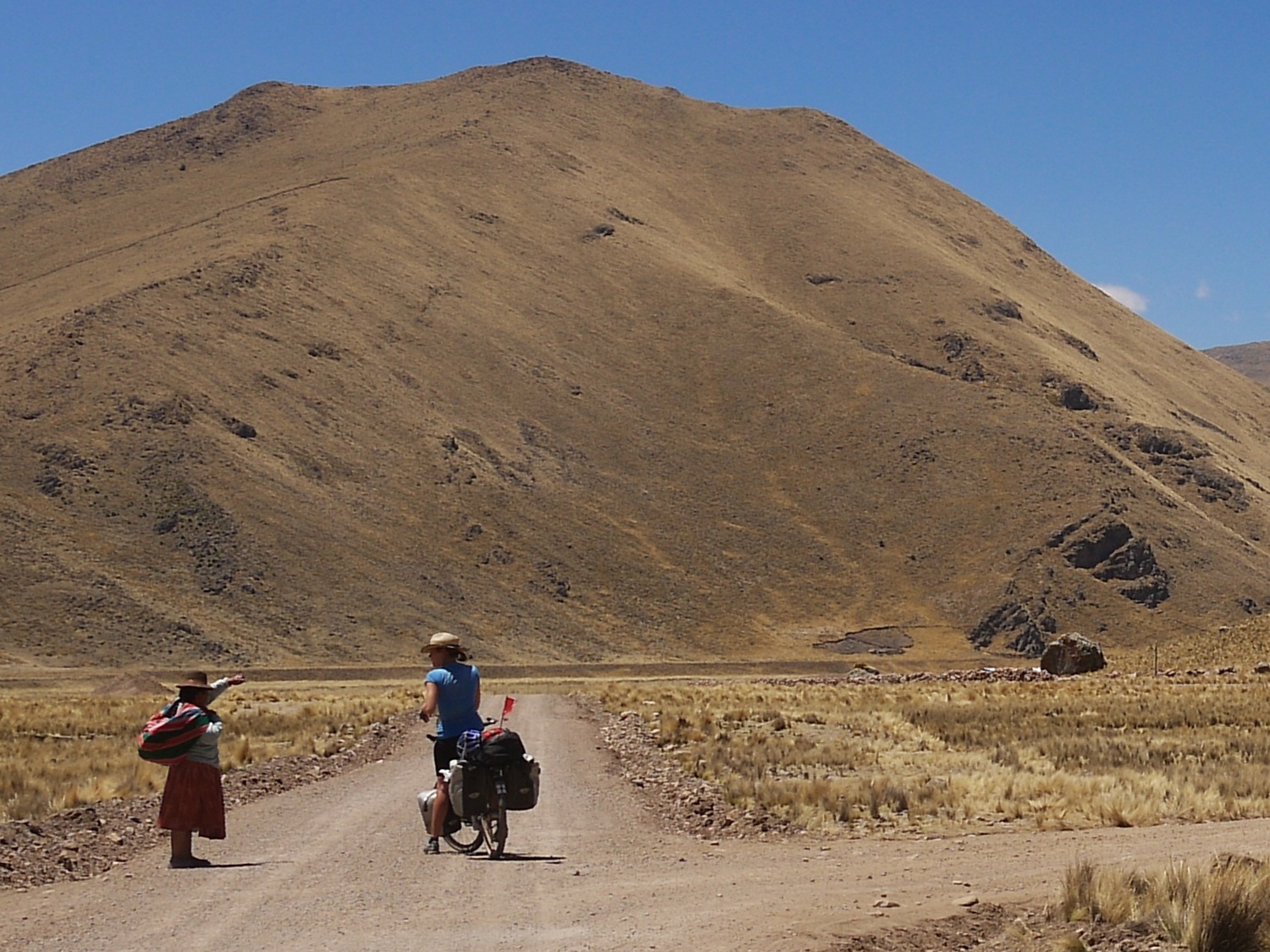
“De Freeeeeente!” It didn’t seem to matter where we were heading in Peru, the directions were always the same. “De Frente!” (“Straight ahead!”) they would say – even when we were standing at a junction with our only options being to turn left or right. No wonder it took us four months to get across Peru…
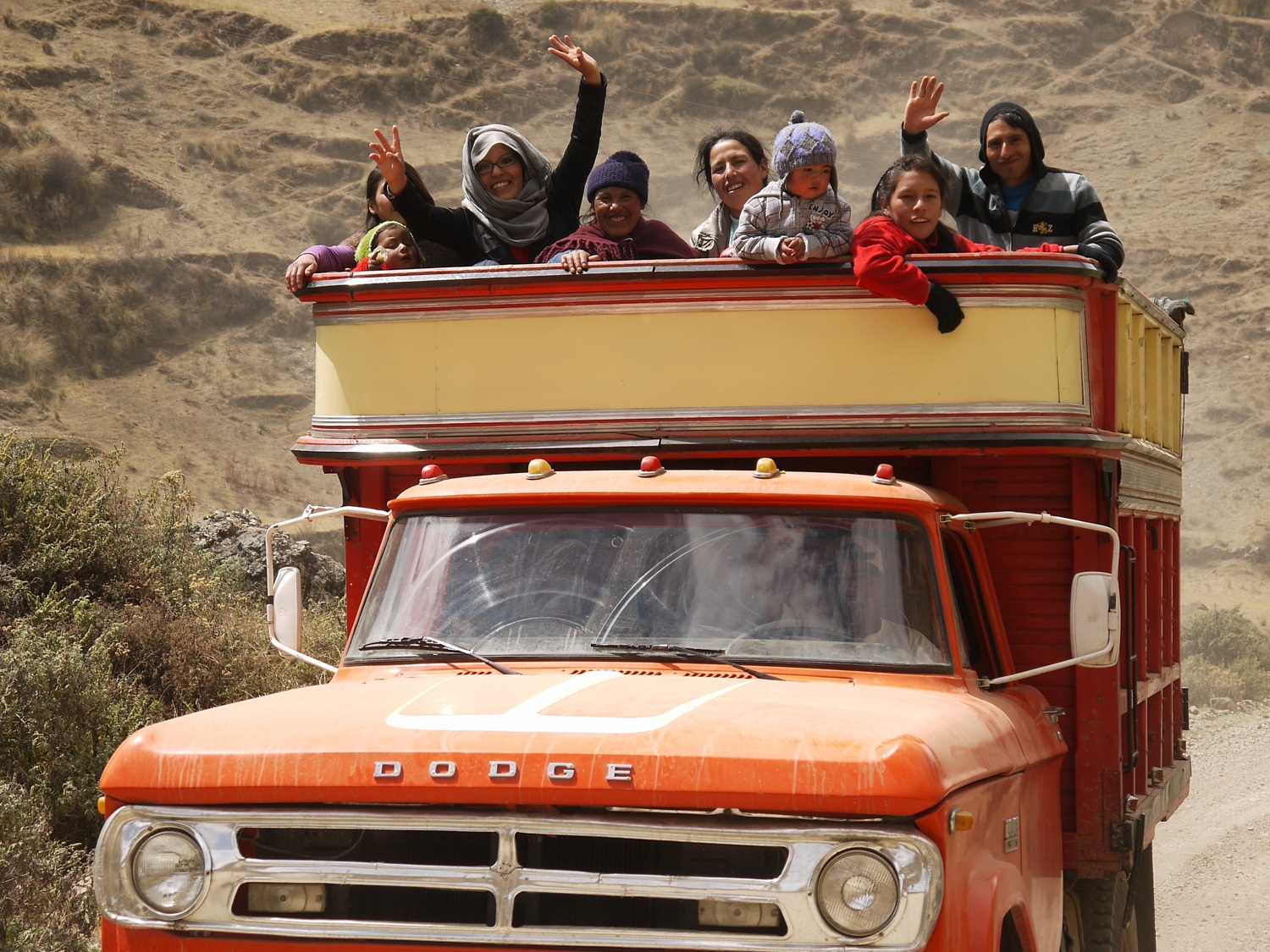
“Griiiiiiiingo!” Forget Andean music, this was the real soundtrack to Peru, shouted from the roadside and from passing cars wherever we went, accompanied by giggles and hoots of laughter once we were safely past. Cyclists – especially Europeans – tend to get their knickers in a twist about it, but resistence is useless: in Peru, if you’re not Peruvian, then you’re a gringo. It might not win them any prizes for geographical knowledge, but at least it was usually accompanied by smiles and waves.
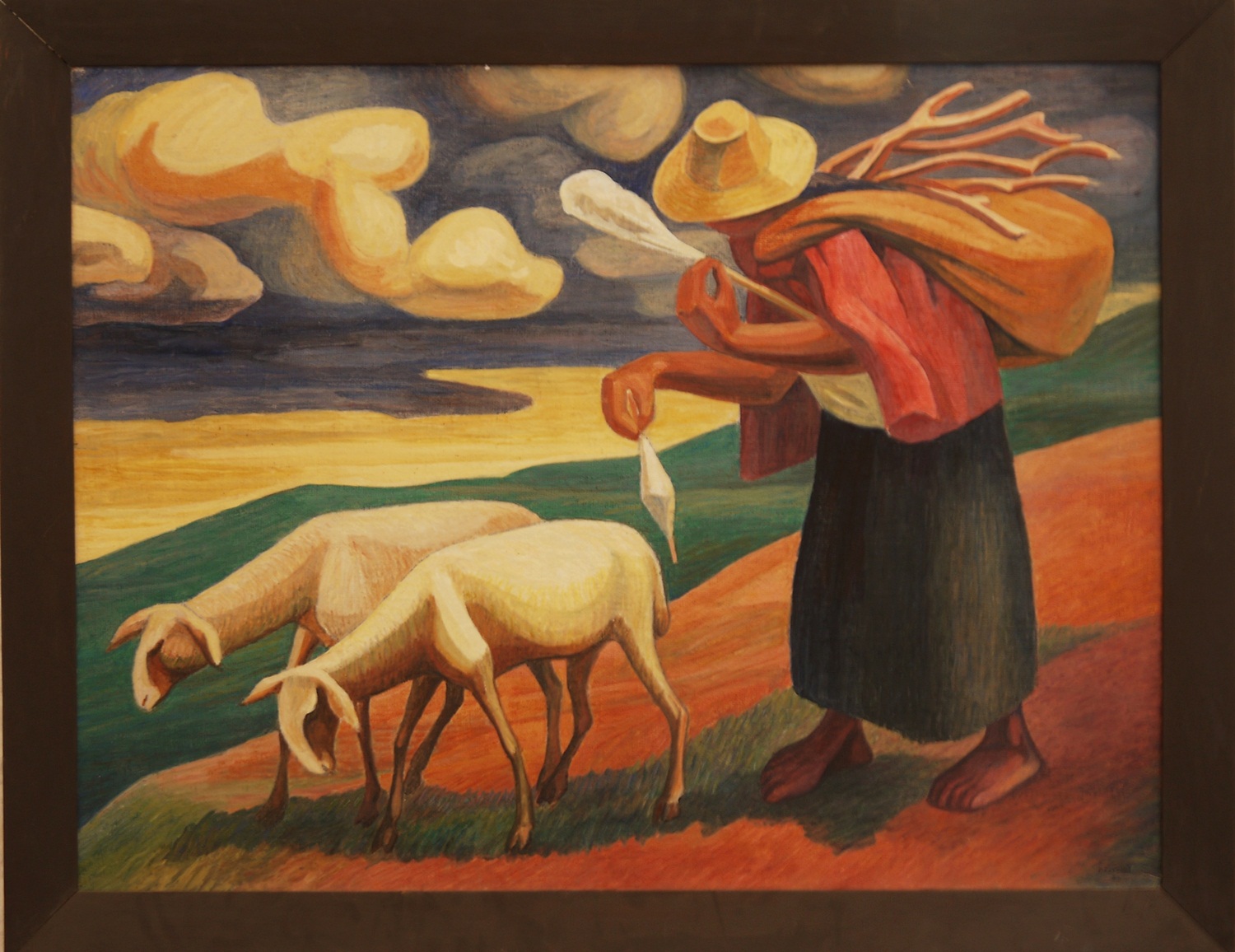
Hunched abuelitas. For some people, it’s the stray dogs in Peru that break their heart. For us, it was the abuelitas (old ladies) that we wanted to scoop up and take home: toothless, bent double under an enormous bundle of firewood, leading a flock of sheep, cattle, llamas and pigs home for the night and spinning wool as they go. This is rural, highland Peru – a life of harsh poverty and little opportunity, unchanged for hundreds of years.

Inescapable. “Just wait for Peru”, people told us when we moaned about the lack of food flavour ever since Mexico. “It’s the culinary capital of South America”. And what did we find? Chicken. Everywhere – for breakfast, lunch and dinner. To be fair, in between the chicken, there were a few food highlights, but in general Peru failed to break the “filling but bland” Latin-American mould, and was something of a food anti-climax.
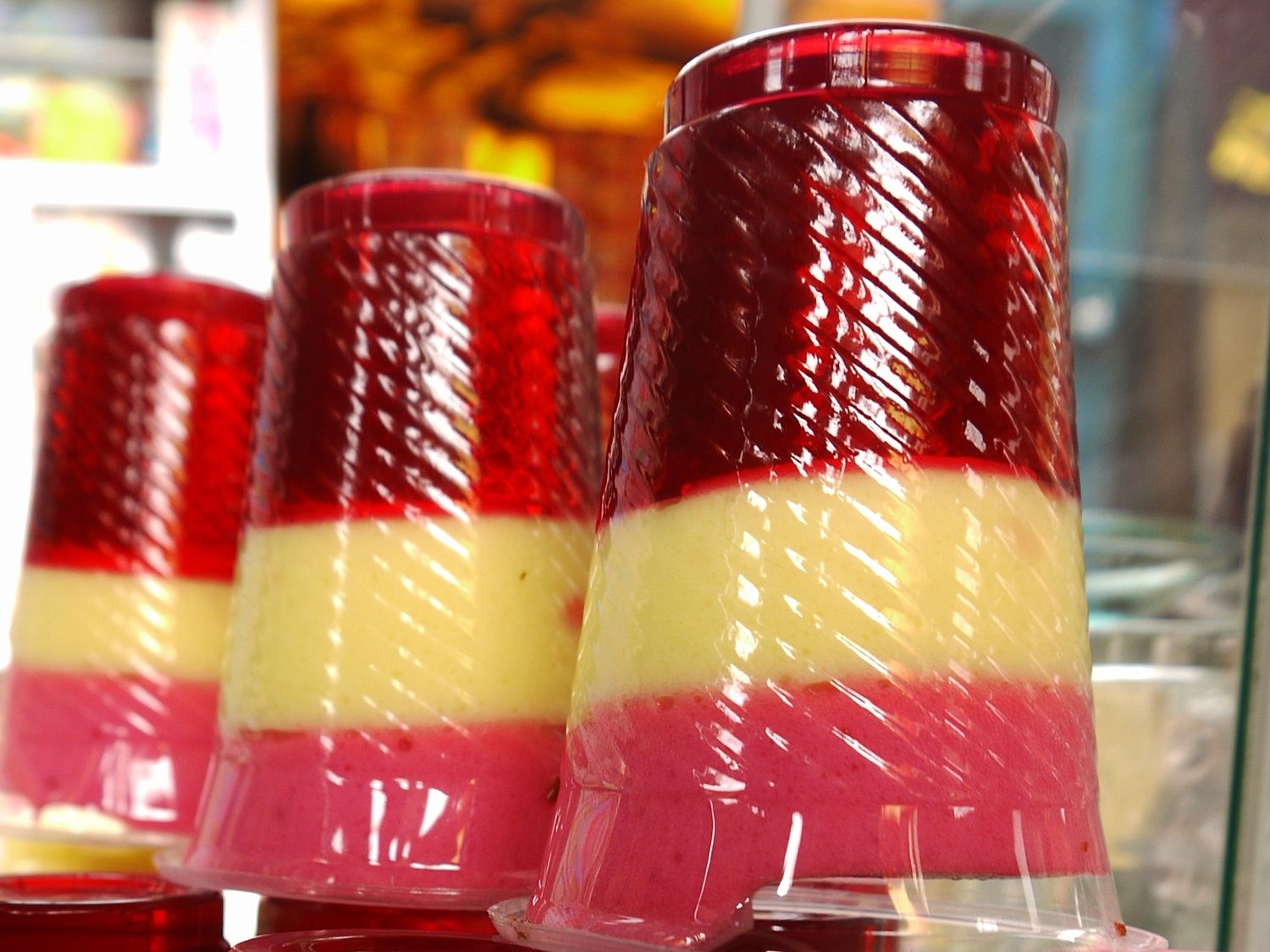
Jelly. And the ubiquitous Peruvian sweetner to follow the chicken? Jelly, of course. We never quite worked out why: was it just that Peruvians never grew out of the kids’ birthday party habit? Or was it the general lack of teeth in the Peruvian population that made it such a food favourite? Either way…
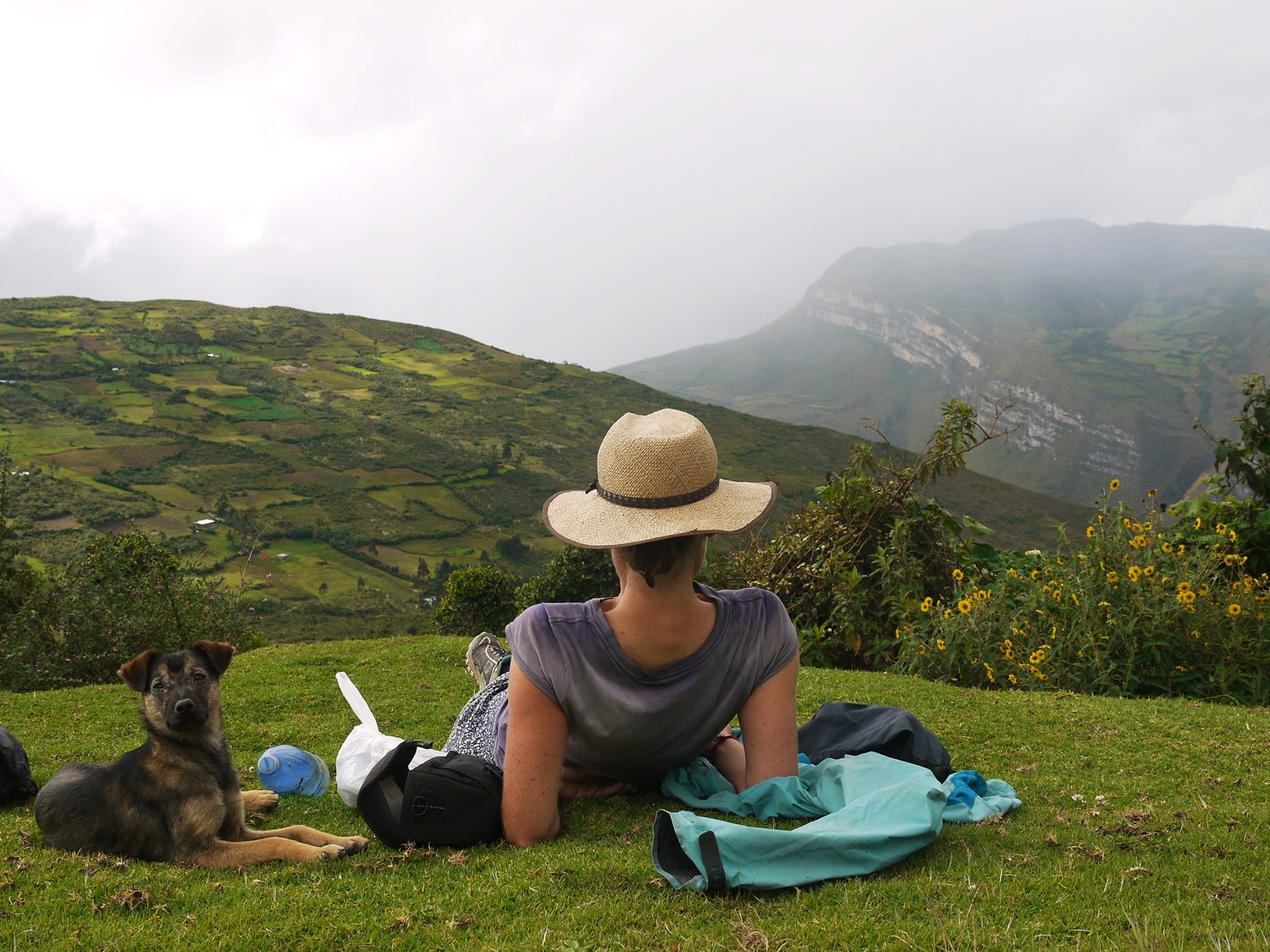
Kuelap. Away from the crowds and manicured lawns of Machu Picchu and the Sacred Valley, this was our favourite ruin in one of our favourte parts of Peru – the misty valleys of Chachapoyas, in the north. Abandoned to nature, and with an incredible 360 degree view into the valleys below, you really could imagine back to when this was a pre-Incan hilltop fortress.
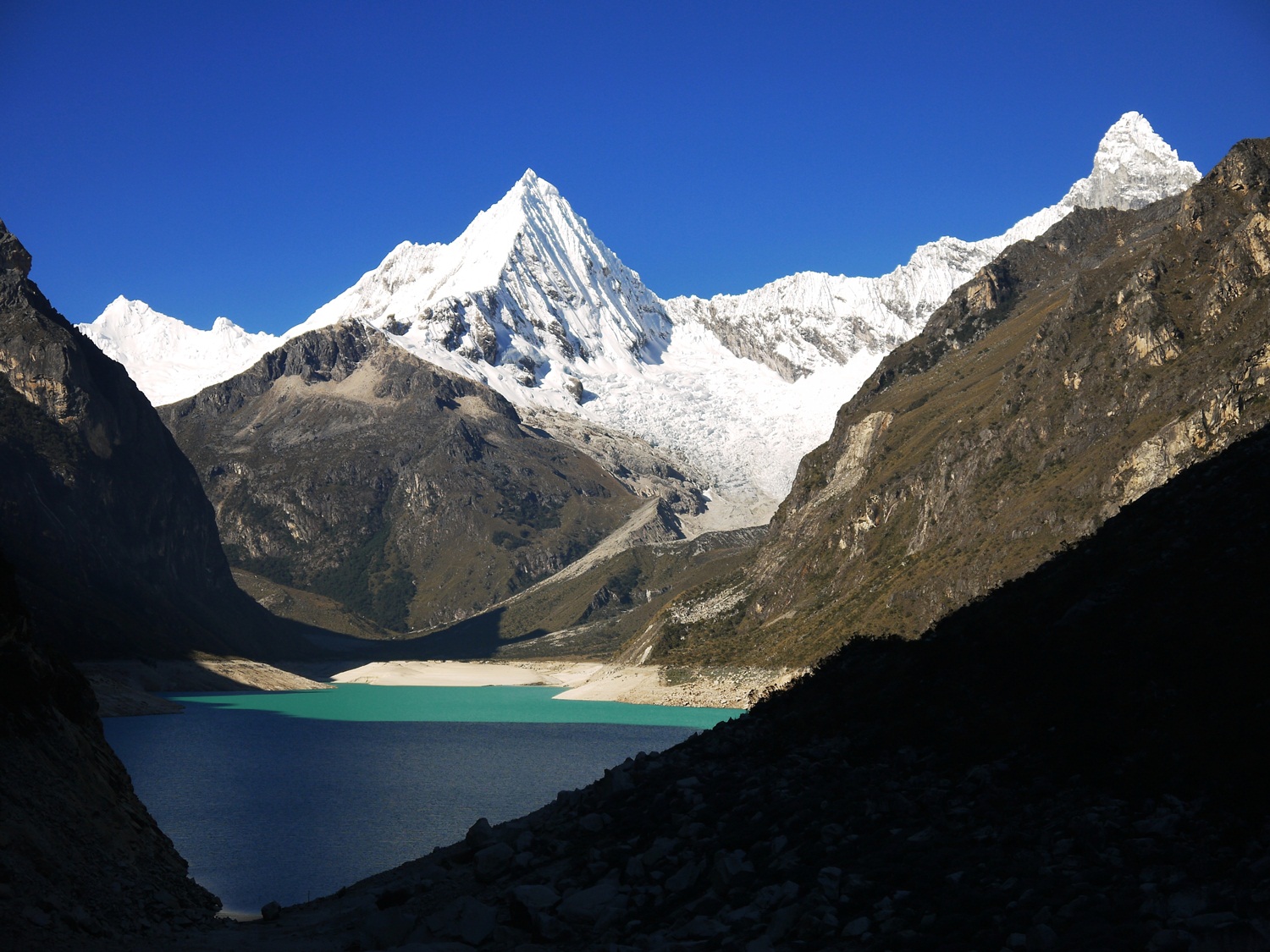
Lakes. Peru had an incredible variety of lakes of all sizes and types: from the icy turquoise of Laguna Parón in the Cordillera Blanca…
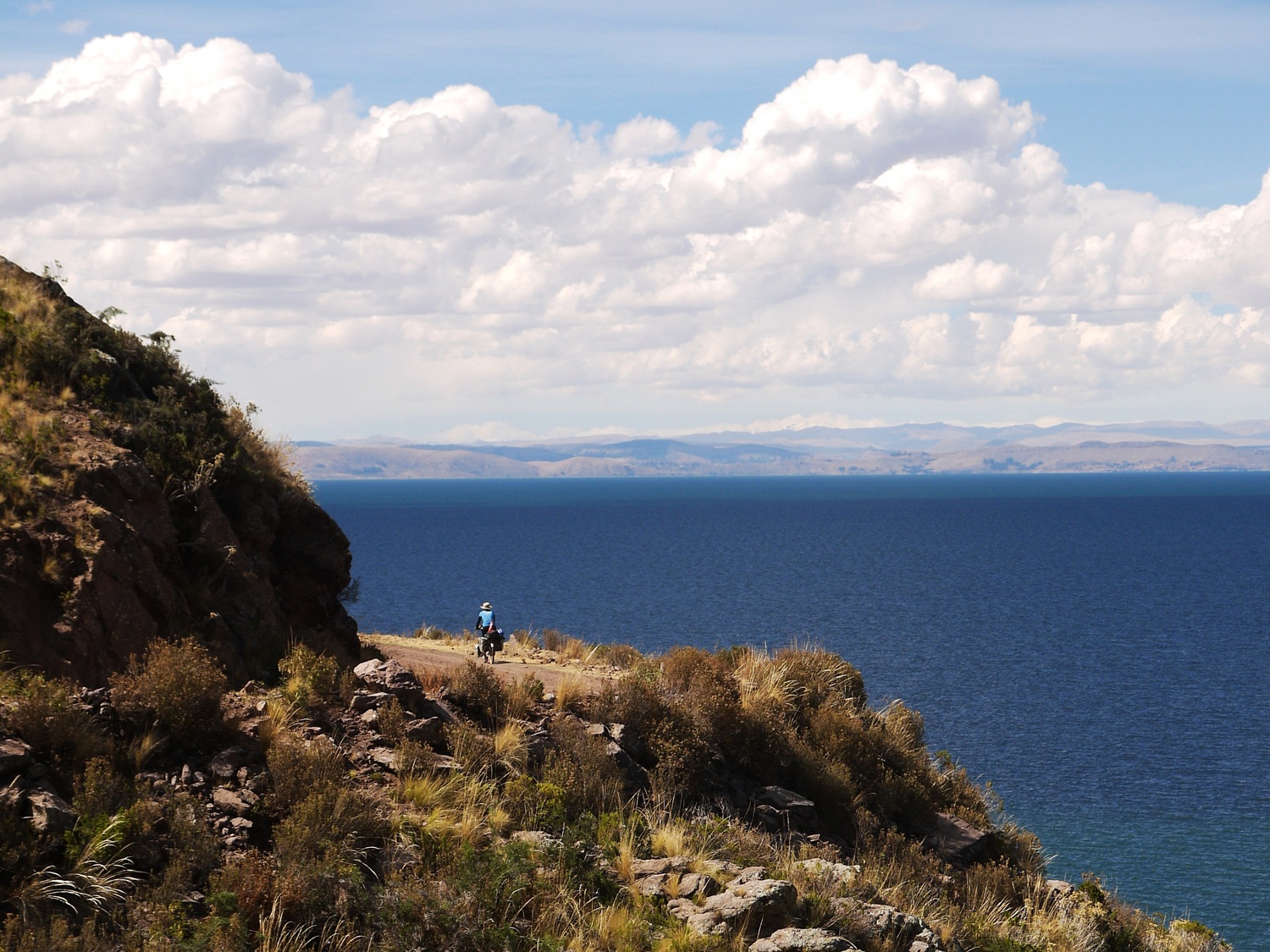
…to the slightly warmer blues of Lago Titicaca on the southern altiplano – where at times you could almost forget you were four vertical kilometres above sea level, and convince yourself you were actually pedalling along the shores of the Mediterranean.

Menú. Bland it may have often been, but for calories-for-cash value it was hard to turn down the Peruvian menú: a lunch of soup, a mountain of rice, chicken (of course) and a drink for less than US$2. Breakfast, on the other hand, was easy to pass by – faced with a choice like this between “cow’s head soup” or “cow’s hoof soup”, even our increasingly tedious breakfast porridge routine suddenly became appetising once again…
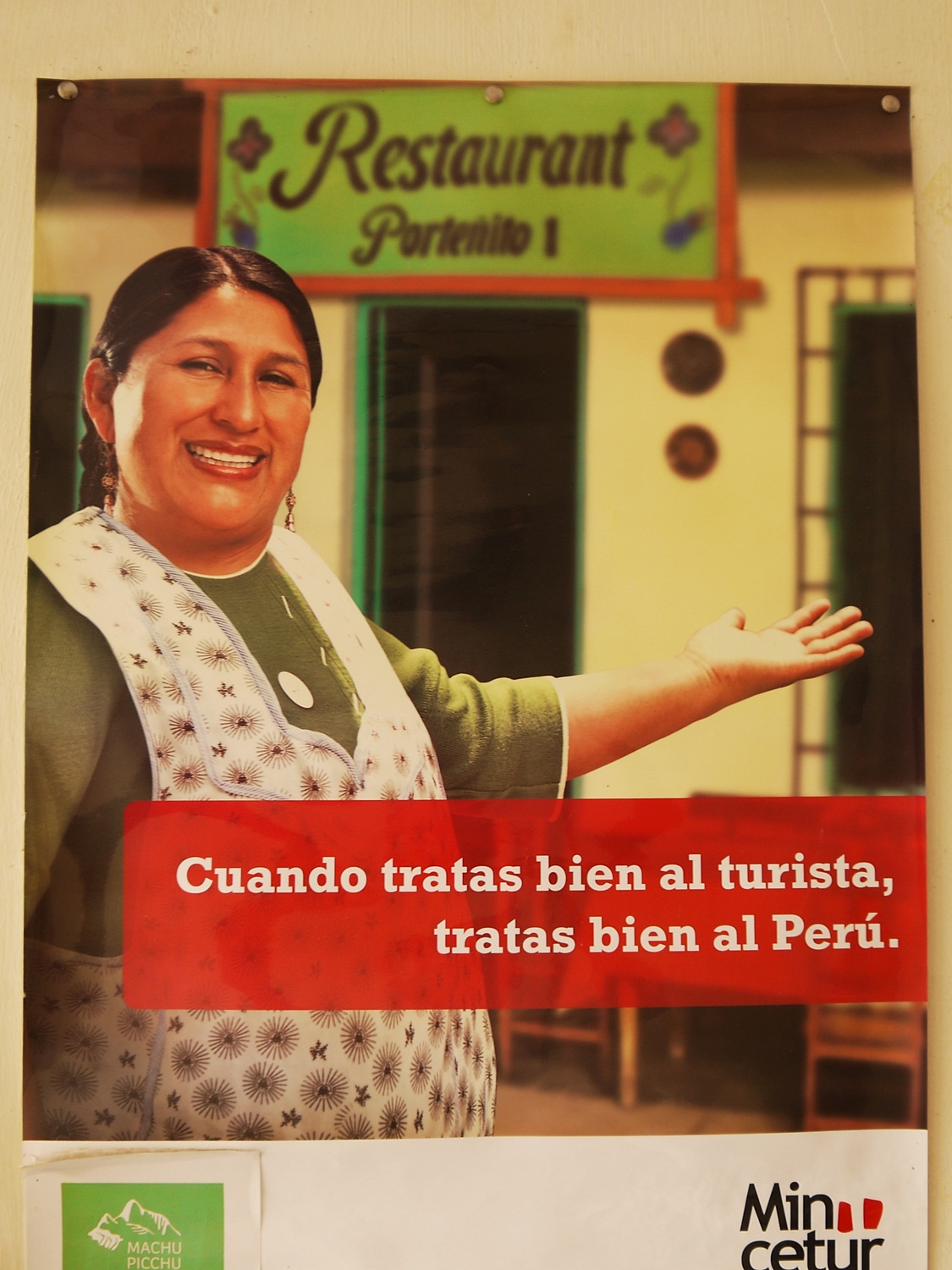
“No hay!” While we met plenty of smiling, friendly people in Peru, “No hay!” (“We haven’t got any!”) was its counterpoint – barked moodily from behind shop counters and hotel receptions. This was definitely the first place in Latin America where we’d seen a government campaign like this one having to remind people that “when you treat a tourist well, you’re treating Peru well.”

Oro. “Yes to water, no to gold!” – so say the residents of Cajamarca, where a massive new mining project threatens to pollute their precious water supply. Since the time of the Spanish conquest, mining has been a topic of furious debate in Peru – it might bring in much-needed foreign investment, but continues to leave behind massive environmental and social problems for local people.
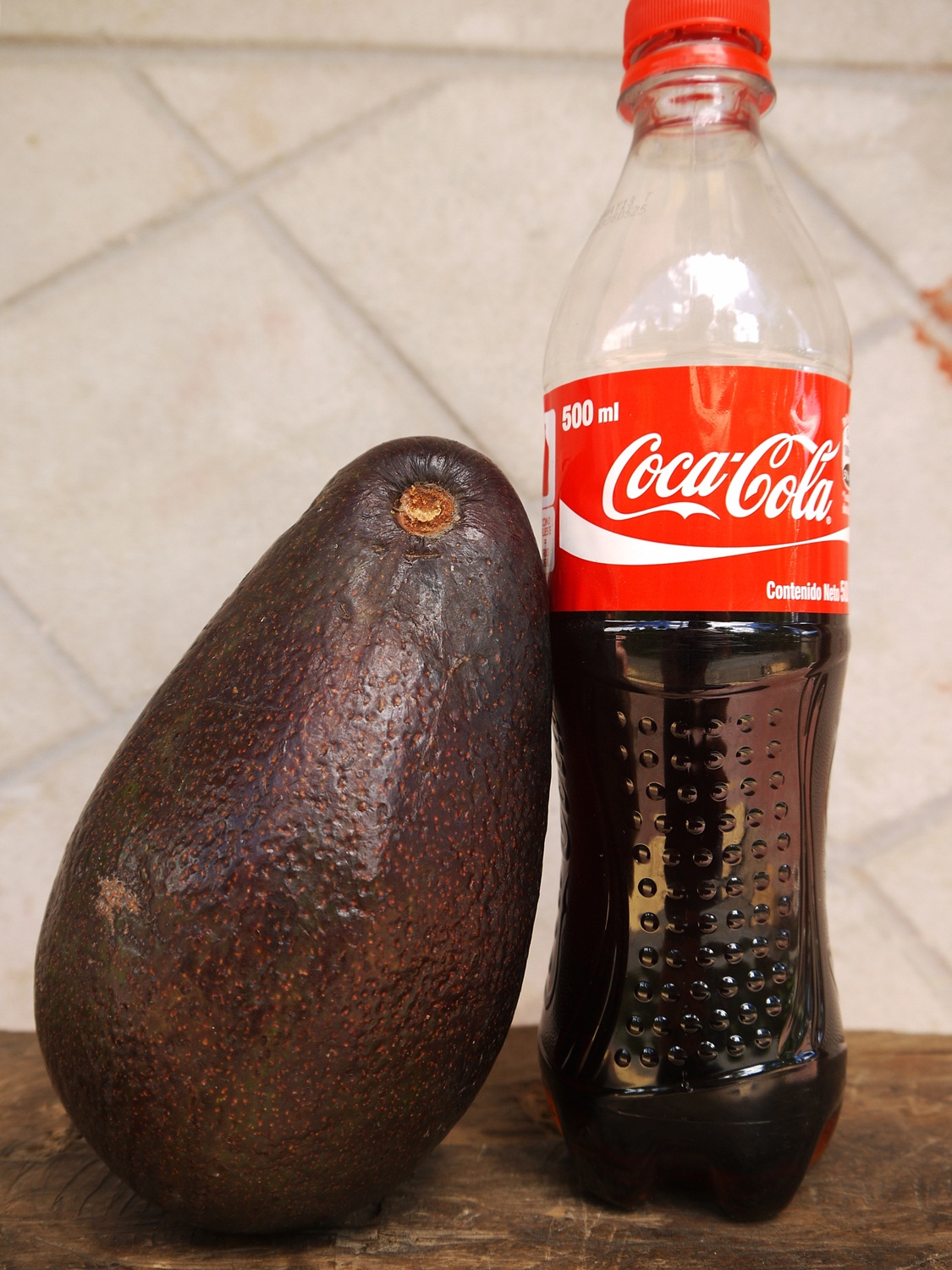
Palta. For the days when we couldn’t face menú just before an all-afternoon climb, there was always palta (avocado) – and Peru had some of the best we’ve eaten on the whole trip. This really is a food of the gods – rich, filling and full of healthy fats. I’m just not sure we will ever re-adjust to the expensive, hard golf balls that pass for avocados at home…
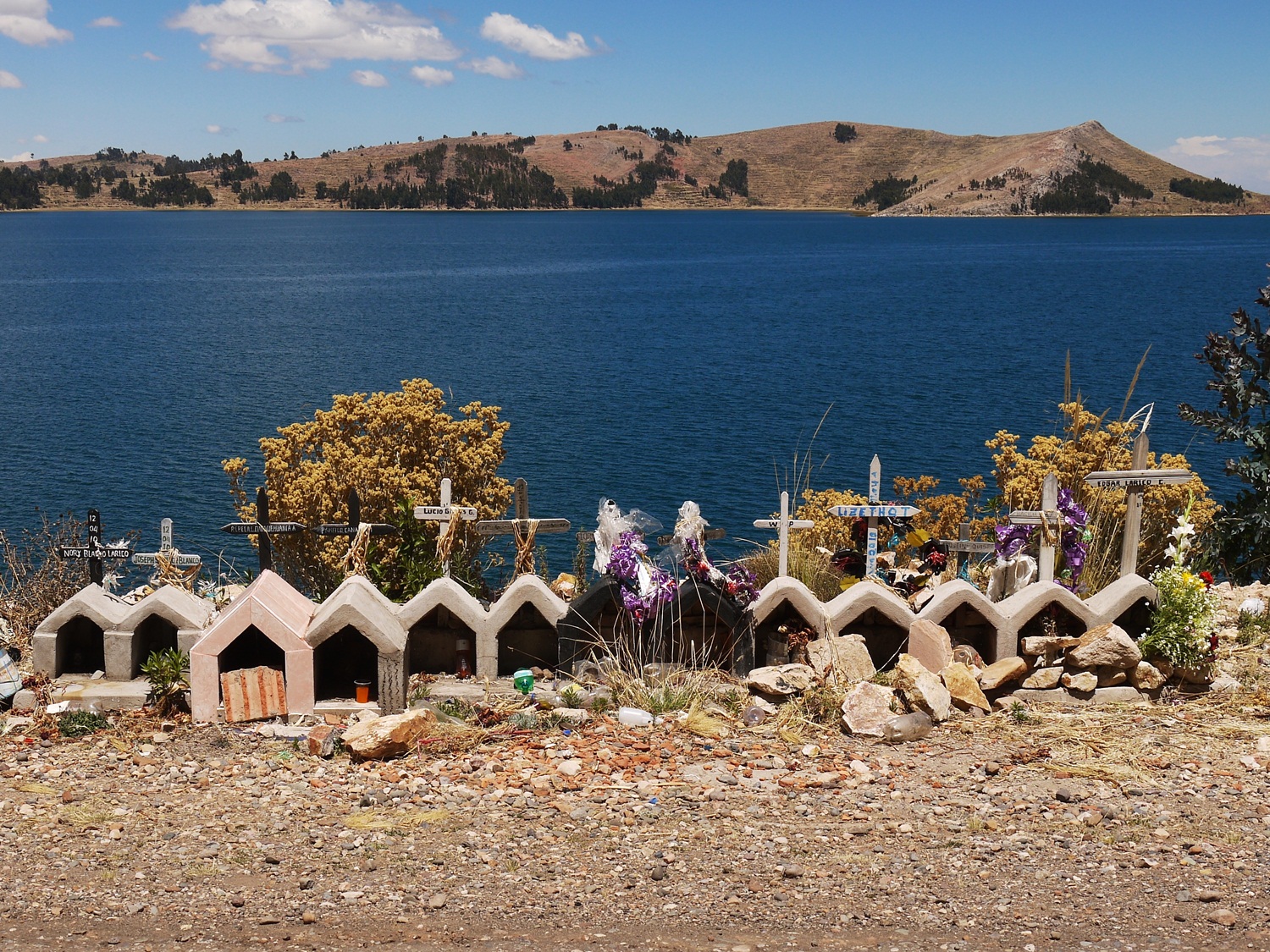
Que en paz descanse (“RIP”). “I ride with Jesus, and if I don’t come back I’ve gone with him”, say the window stickers on Peruvian minibuses, in one stroke absolving their drivers of any responsibility for their driving. If they were more honest, they should probably read: “I drive like a cretin, and if I don’t come back it’s probably because I’ve driven myself and my passengers off the edge of a cliff while overtaking on a blind bend at 100km/h.” Peruvians’ erratic driving may have brought on the red mist every time we misguidedly ventured onto a main road, but more than that it made us incredibly sad to see so many Peruvians needlessly killing each other.
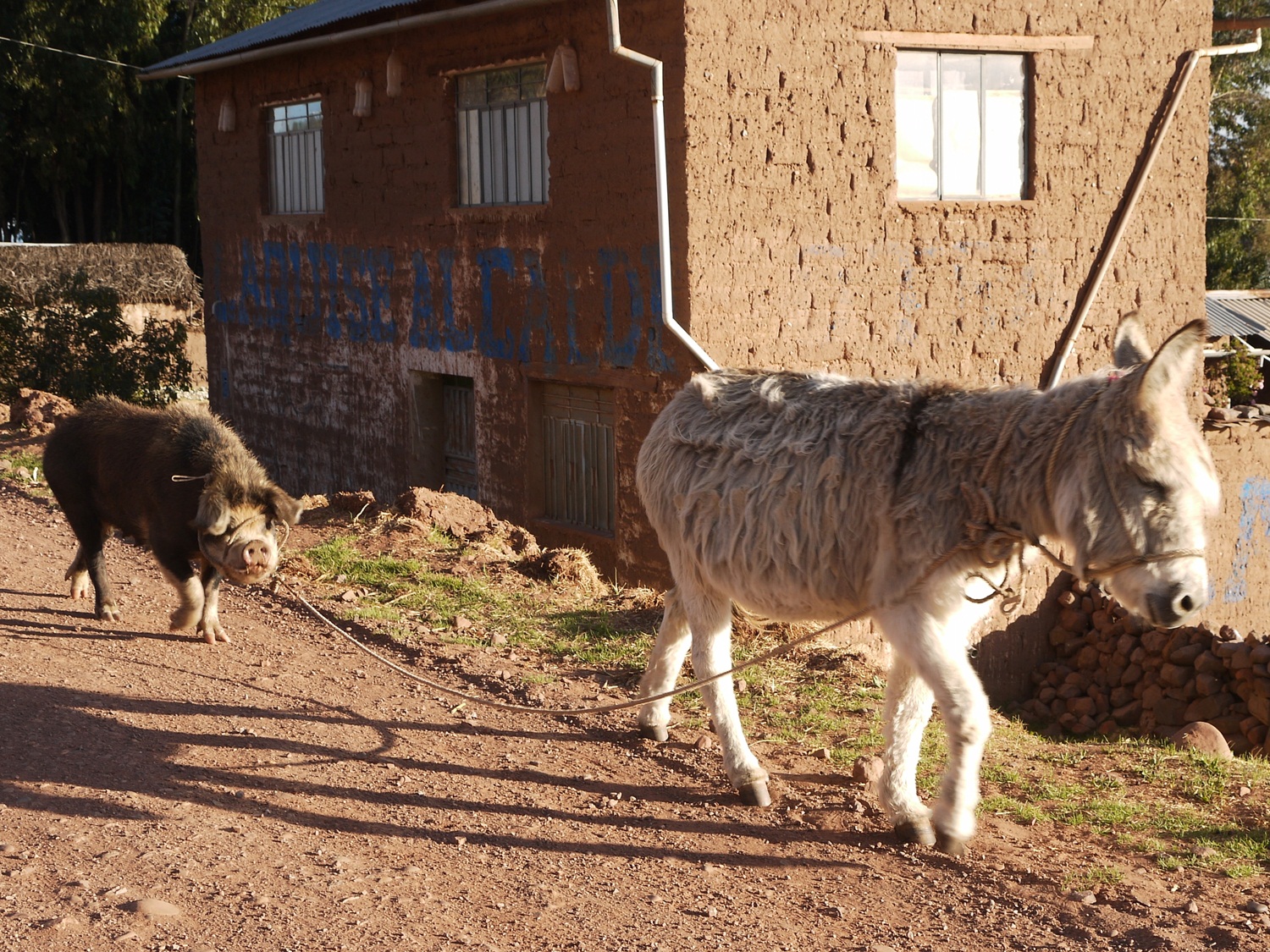
Rush hour. Away from the blaring horns and slalom course of the main roads, rush hour on the Peruvian back roads was of a more sedate kind, as people led enormous mixed groups of llamas, alpacas, sheep and pigs back from the fields for the day. This was undoubtedly my favourite Peruvian “long vehicle”: a donkey leading a pig home for the night as if it was the most natural thing in the world, its owner nowhere to be seen.
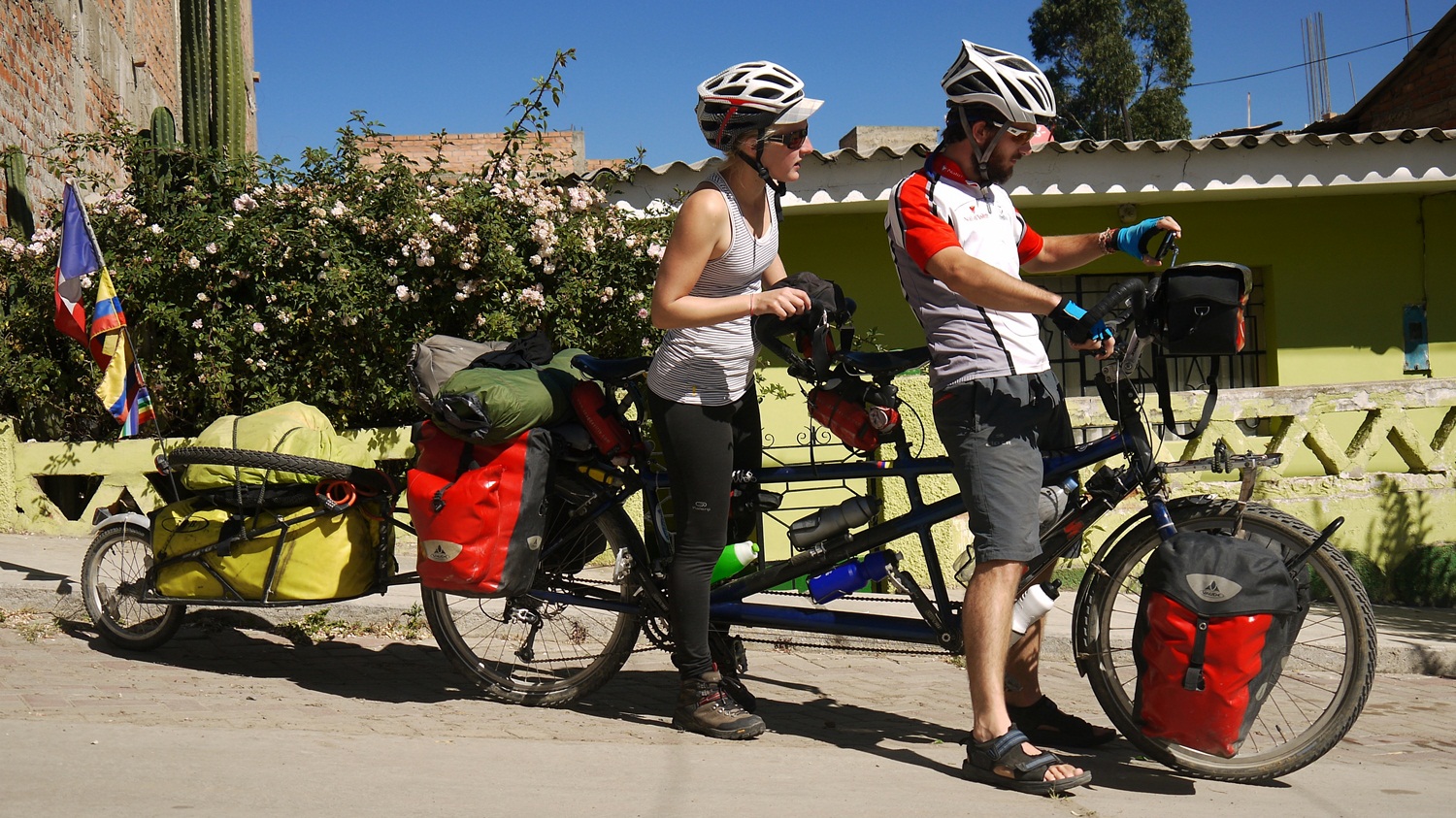
Sociable. Our ride through Peru coincided with the peak season for cyclists heading south, making it a sociable place to catch up with new and old friends from the road – focused of course on eating and drinking: trufa munching with the French tandem duo Artur and Caro; more caffeine hunting with our friend Anna; polishing off our Dairy Milk supply with the Genners; and Spanish tortilla making with Salva and his girlfriend Lorelí.
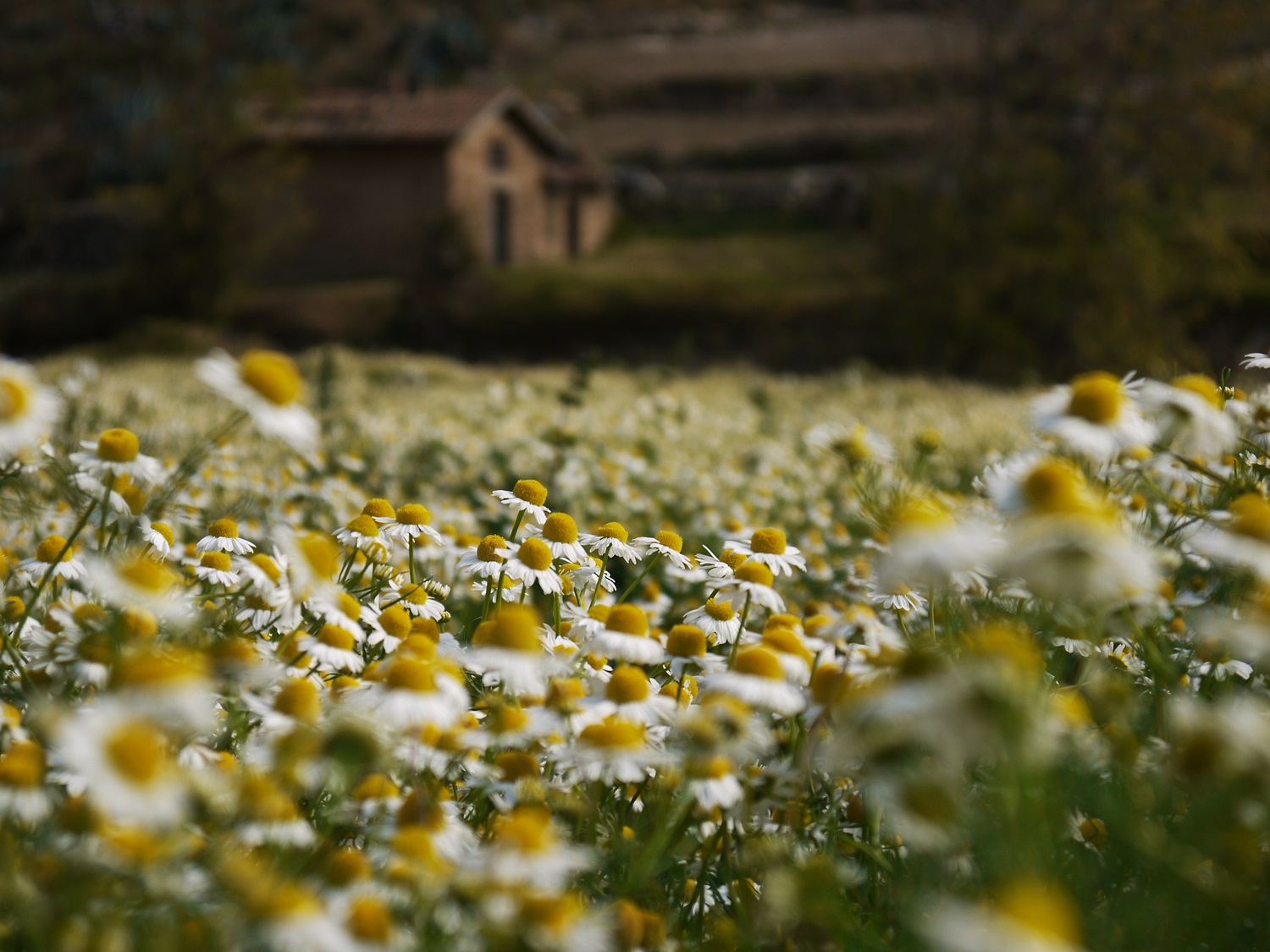
Tea. Of course, for us no country since Mexico would be complete without at least one attack from our parasite friends forcing us off the bike. On long bike trips, some people suffer with bikes that fall apart, while others struggle with injuries. It seems that our weak point is our stomachs, which stubbornly refuse to adapt to foreign invaders in the way our legs have to all-day climbs. Luckily Peru had an abundance of stomach-calming manazanilla (camomile) to sooth our stomachs and keep us pedalling.
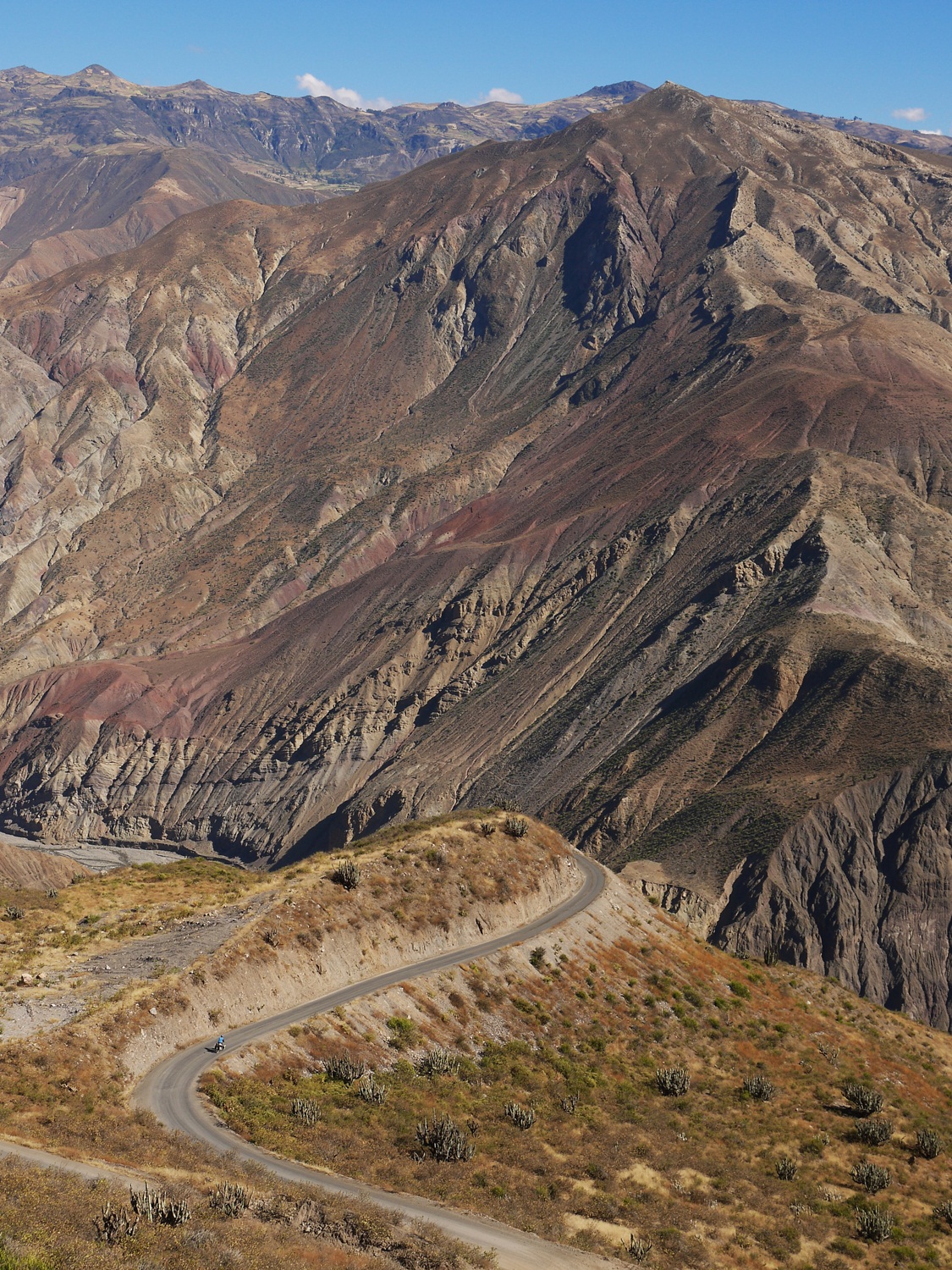
U-shaped. Peru: land of the switchback. Where Ecuador goes for direct and steep when faced with a mountain to climb, Peru goes for long and spaghetti-like – making for steady climbs and long descents with plenty of time to take in the views. This was one of our favourites, descending from Pallasca into the Río Santo gorge in northern Peru.
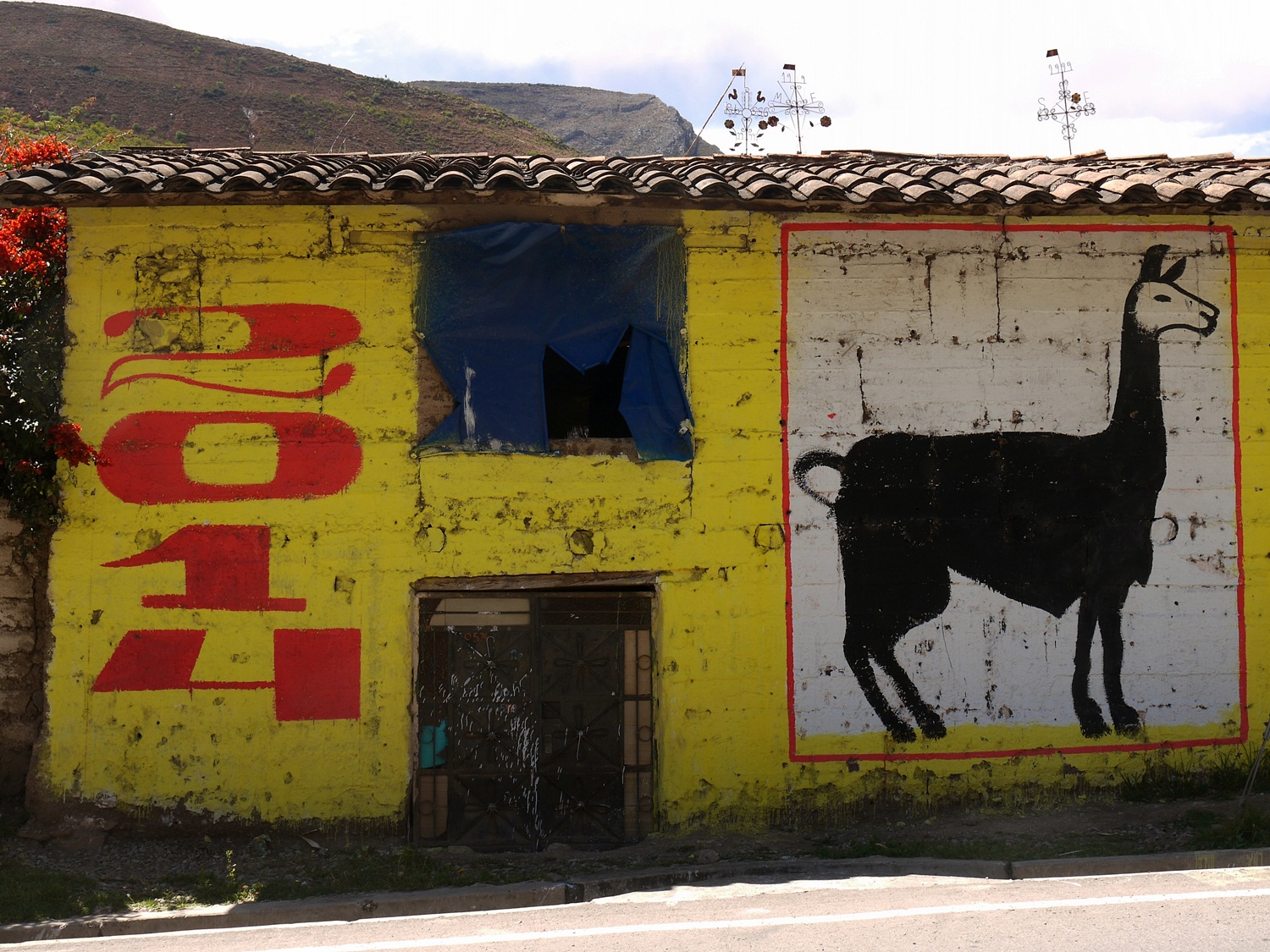
Vote for me. In Peru – like much of Latin America – you’ll struggle to find an abandoned building or wall which doesn’t feature a sign urging you to vote for Edwin, Alan or Alvaro. Except the uniquely Peruvian twist on political propaganda is that each candidate chooses an image to represent their campaign – ranging from a sombrero to a bulldozer to one of our favourites, this llama.
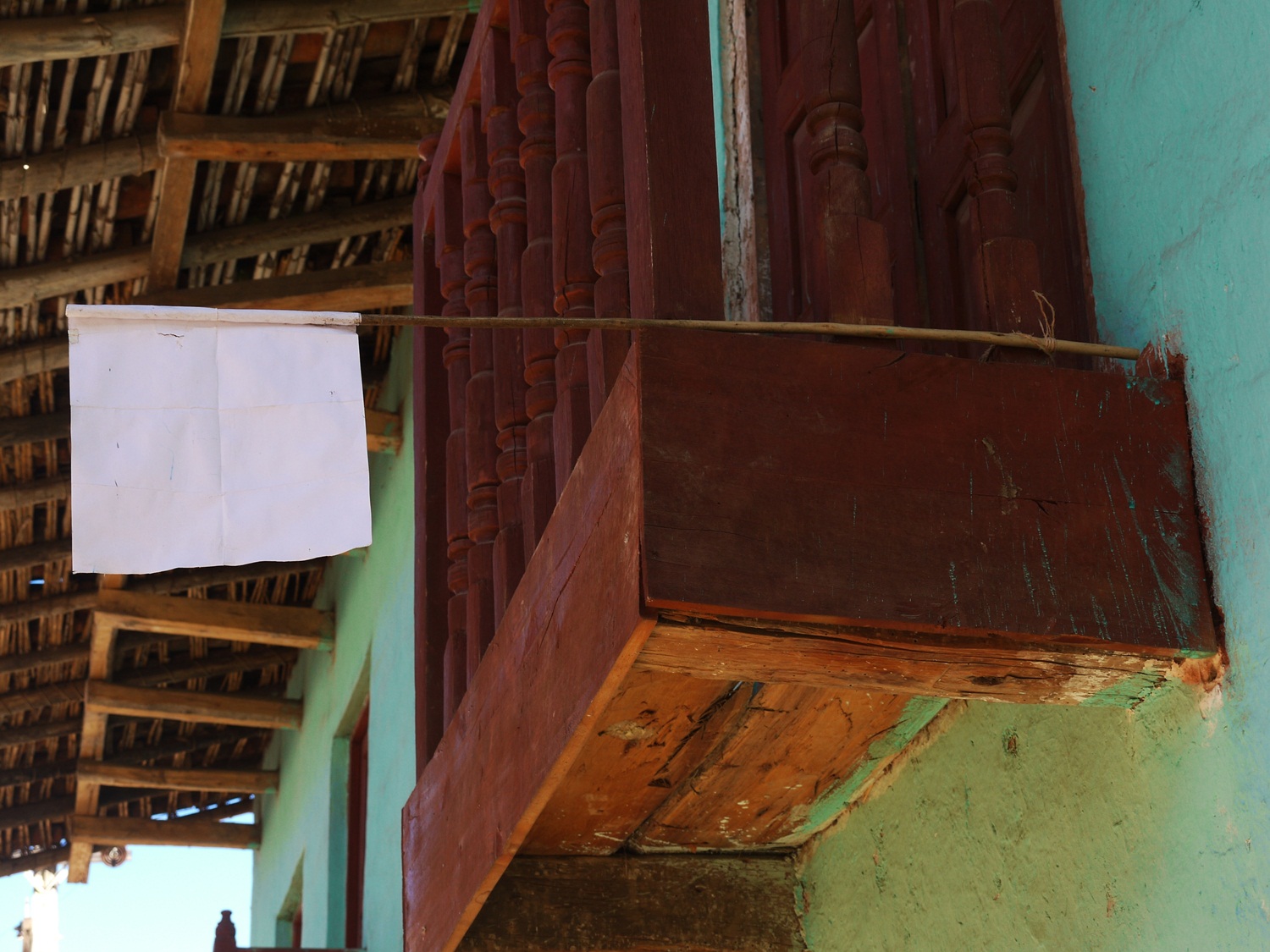
White flag. No, not the white flag of surrender when faced with another monster Peruvian climb, but one of salvation for the hungry cyclist. We quickly learned that a white flag hanging outside a house in rural Peru meant that they had freshly baked bread for sale – a lifeline when often the only thing the tiny local shops had on offer was out-of-date crackers and yesterday’s jelly.
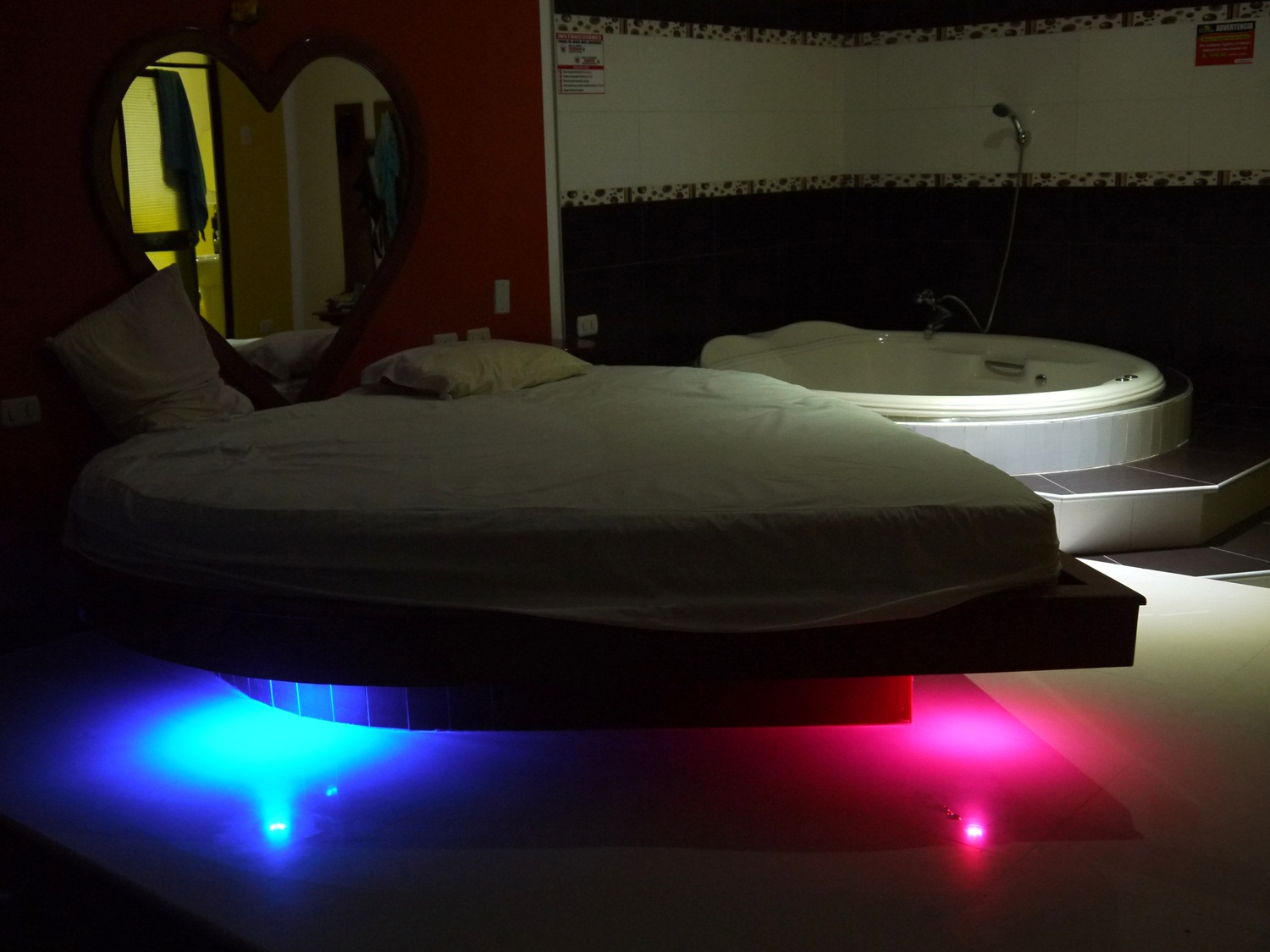
X-rated. Finally, we ticked the “night in a love motel” off our Latin American to do list – and we didn’t even have to pay for it. When we presented ourselves to the chief of police in Bagua Grande and asked if we could sleep on his floor, he insisted on sending us to the local love motel at his expense. Jacuzzi, TV, flashing lights – this room had it all, even if our feet did hang off the end of the heart-shaped bed…

“You wouldn’t want to live here” is a phrase that has run through my head many times on this trip, but maybe none more so than in Peru. This is a country of ghost towns – neglected, wind-swept and strewn with tumbleweed. Cycling through places like this, with the barefoot children of one or two remaining residents watching silently from the doorway, makes you realise that opportunity is one of life’s greatest riches. Most of these people will never have the opportunities we take for granted – to travel, to study and to work.
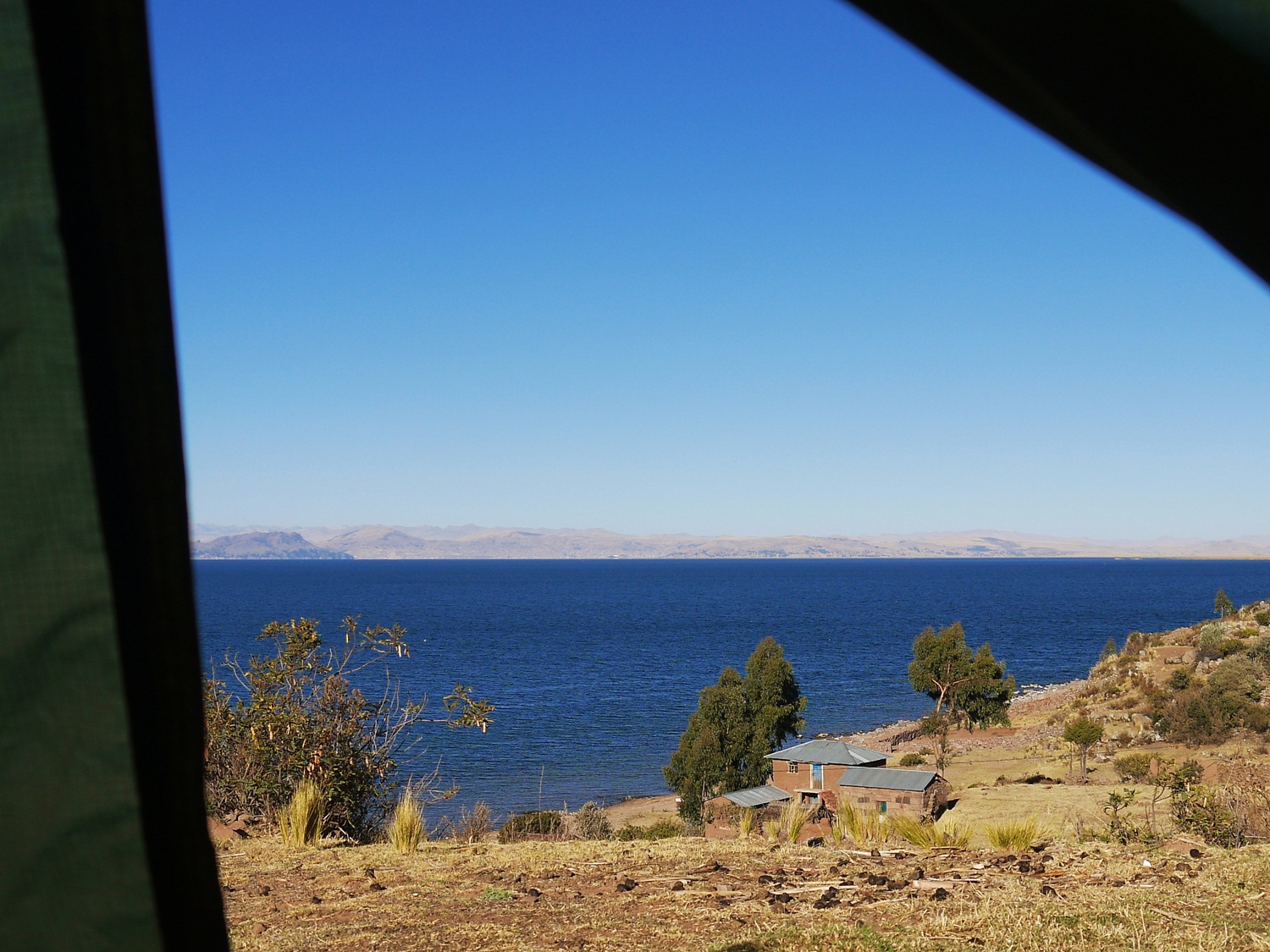
Zzzz. Peru had some of our most idyllic camping spots of the trip so far: the pampas of the Cordillera Blanca with peaks towering above; breakfast on the shore of Lake Junín while watching feeding flamingos; and early morning views across Lake Titicaca from the Llachón Peninsula. Five star accommodation doesn’t get any better than this.
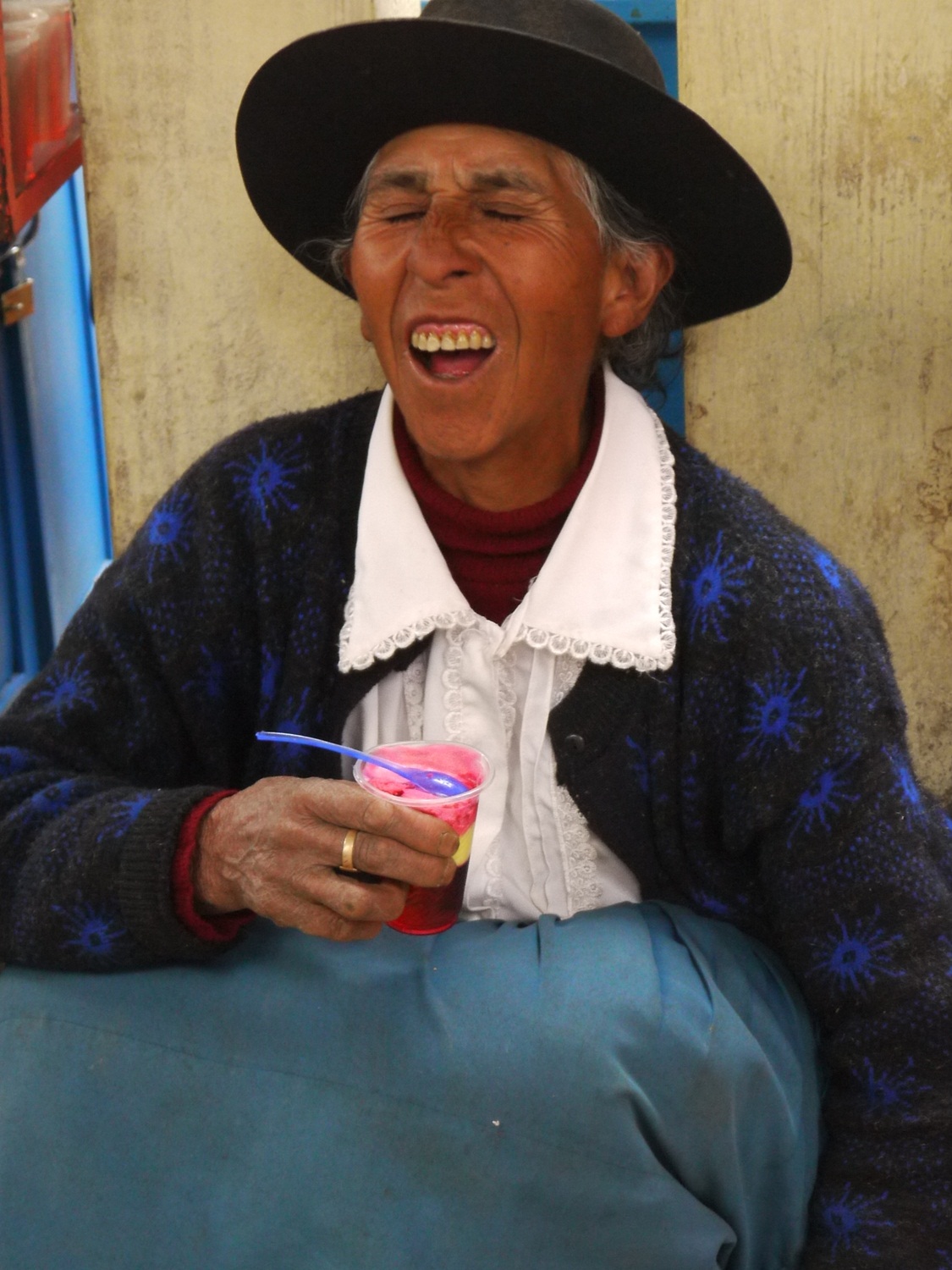
October 15th, 2013 at 7:34 pm
Lovely post! Interesting observation on the subdued Latino ‘lust for life’. I guess it’s no surprise for the reasons you mention. We have a lot to look forward to down there, especially those white flags!
[Reply]
October 15th, 2013 at 10:35 pm
S&J, bendiciones en el viaje. Acá con Flaca riendo de alegría de las imágenes.
Buena vibra y salud;
D&J
[Reply]
October 16th, 2013 at 3:19 am
So inspiring!What an incredible trip. The birds, wild flowers, orchids and insects like butterflies; are they few or many. Have you seen a condor? Thank you for such amazing photos. Sue
[Reply]
October 16th, 2013 at 6:58 am
Oh my word! What a lovely piece! I read this with Mary Beasley in the office and she says you should definitely write a book and do an inspirational lecture tour when you come home! Lovely pictures and great insights. Hope your “visitors” are not too troublesome and that you soon get them under control! Love you millions. Ma
[Reply]
October 16th, 2013 at 9:05 am
Brilliantly written and understand every word, how very true. Love reading your perspective and such well written/photographed pieces. Headed out to do the Punta Olympica loop today. Excited!
[Reply]
October 16th, 2013 at 9:14 am
Your passage through Peru,as always,very well described and as you say regarding the people of each different country we here in Colombia even though we have so many different troubles, I still say that this is the best place to live and I will not be leaving Medellin !!
Good health for both of you!
[Reply]
October 17th, 2013 at 8:36 am
Bom Dia S&J – enjoyed this post – so much of interest but I must make one comment about one of our favorite foods – JELLY. David and I have jelly at least once a week, to be honest I wish I could have Jelly every day – blueberry the best – its a superfood.
Loved the donkey and the pig – new twist on Travels with a Donkey
M&Dx Algarve
[Reply]
October 17th, 2013 at 3:57 pm
Seriously Butcher, what’s with the sleeveless puffer??!!
[Reply]
November 3rd, 2013 at 4:07 pm
Another great post guys – very perceptive as always. We had a great De Freeeeente moment the other day (‘WHATEVER you do, don’t go de frente (slight indication to right), make sure at all costs you go de freeeente (slight indication left)’.
Will be interested to see what you think of the folk further south. We’ve always found Bolivians extremely friendly and helpful, but much more conservative and down-trodden than Peruvians. We once read (and have found it often to be true) that the Chileans are the ‘British of South America’ ie friendly once you get to know them, but initially pretty stand-offish and cold. The Argies of course are all hugs and kisses right from the off!
I think it very much depends where you are in Peru as to the reaction you get. In cities (Lima, Cusco, Huaraz) we’ve often heard the rateros line, but this last month in the wilds we’ve had nothing but ‘it’s great round here, totally safe’ as well as receiving wonderful hospitality and forever becoming involved in interesting chats. There were plenty of miserable faces around when it was raining and hailing…but 2 of them were ours…
[Reply]